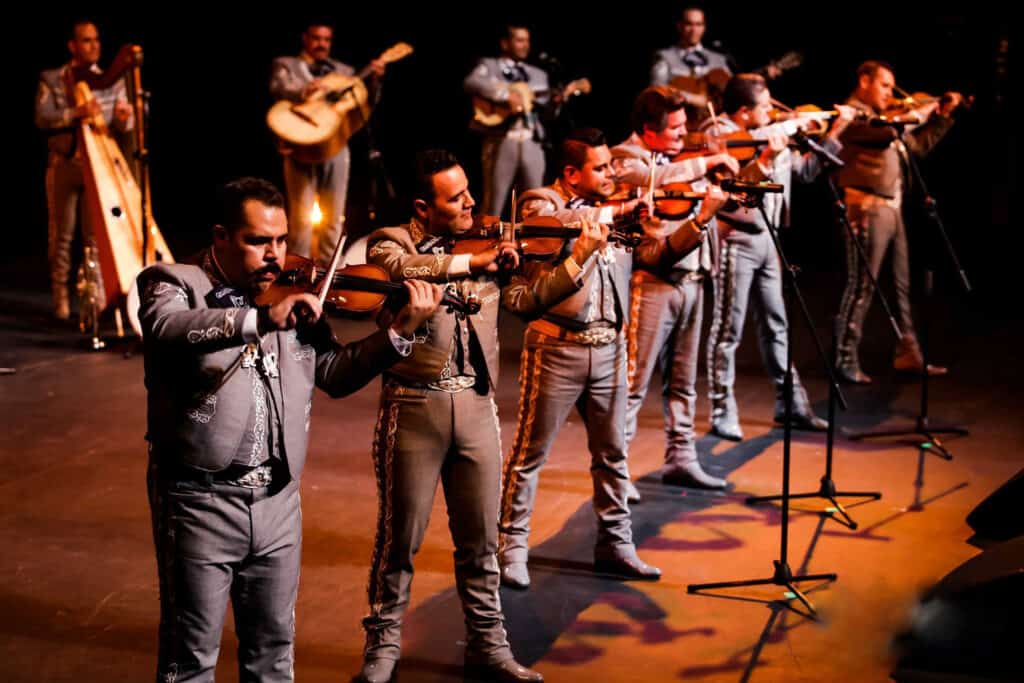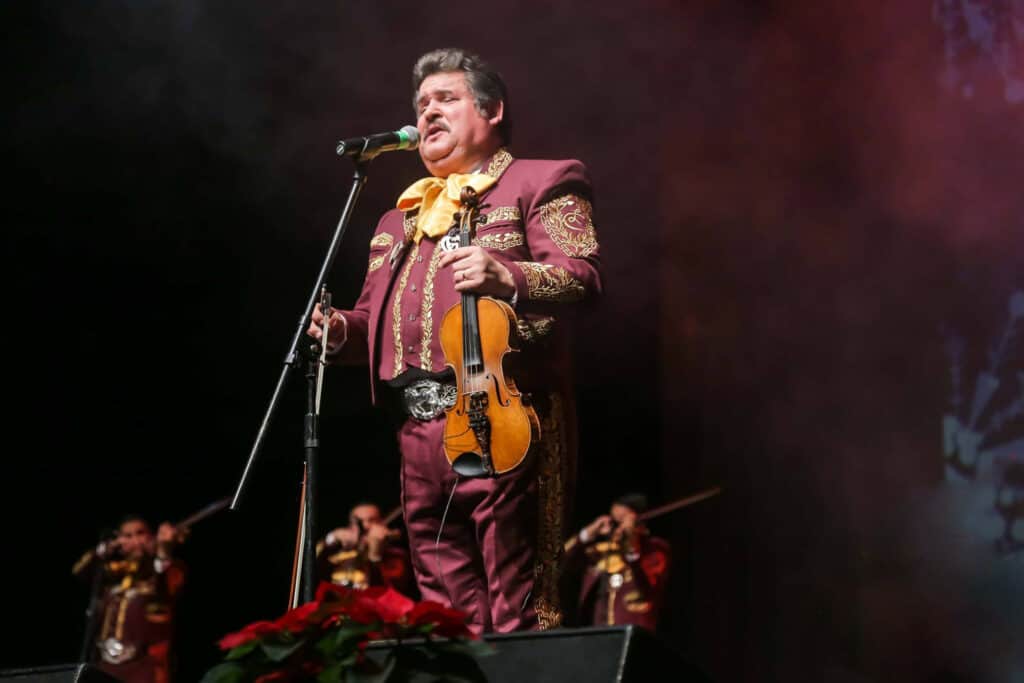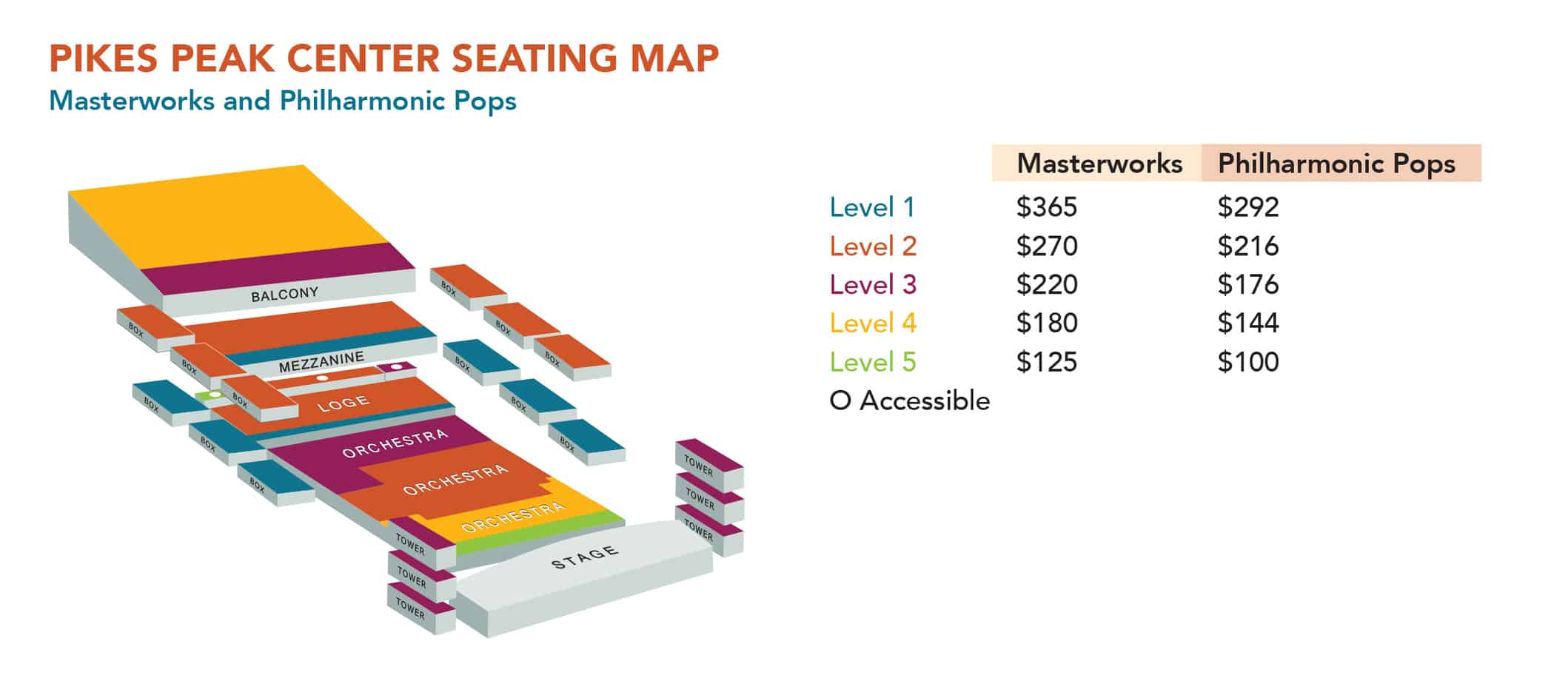
by Sarah Ryals
From rollicking to romantic, contemporary mariachi music has emerged from humble roots in rural western Mexico to become a widespread popular folk music form. Its light-hearted, dance-able melodies and soulful ballads are irresistibly appealing to a wide range of audiences. There is perhaps no better interpretation of mariachi than the LA based Mariachi Los Camperos. This 60-year-old traditional ensemble has been lauded by The National Folk Festival for playing “… a central role in the United States in raising both the artistic standards and the public perceptions of mariachi….”
The group’s elevated executions have been pivotal to upending clichés, knocking down preconceptions, and transforming how the world sees and hears this centuries-old folk music. Local audiences will get a chance to experience this excellence firsthand as part of the Colorado Springs Philharmonic’s pops series when the award-winning troupe will join the orchestra for two performances on May 12-13, 2023.
"Cowboy-musicians performed in plazas and restuarants wearing smart equestrian attire which became the template for the modern day "charro aesthetic"
The origin of mariachi can be traced back to the 1500s when Spanish explorers introduced stringed instruments and the concept of ensemble music to the indigenous culture of Mexico. Native and mestizo people adapted the instruments to their folk songs. From these early roots, mariachi dispersed and developed regional styles over many generations. The continuing influx of Europeans to Mexico brought in musical influences from opera, waltzes, polkas, and sentimental, piano-centric “salon music.” By the early 1900s, rustic, rural mariachi had migrated to Mexico City. There, the cowboy-musicians performed in plazas and restaurants wearing smart equestrian attire which became the template for the modern-day “charro” aesthetic. In post-revolutionary Mexico, national pride combined with advances in sound and film recording helped drive the popularity of mariachi throughout the country and across the border into North America.

"Cano was determined to see Mariachi achieve the prominence accorded similar catergories of music."
By mid-century, the mariachi movement was booming. Natividad “Nati” Cano, a third-generation mariachi musician from Jalisco had been employed as a music arranger when he decided to organize his own group. He founded Mariachi Los Camperos – “the countrymen” – in 1961. Cano led his musicians on a joyous crusade to educate listeners, including formally trained Mexican musicians who looked down on the mariachi art form. Cano was determined to see mariachi achieve the prominence accorded similar categories of music. Artist booking site, Alma, describes Cano as “… a visionary leader who wanted to take the mariachi performance out of customary locations such as cantinas and into concert halls…” Cano made it his mission to render mariachi with a polish and artistic rigor that would appeal to seasoned concertgoers.
The band located to Los Angeles in 1969 and began building their reputation in the US. One alliance in particular helped the group achieve more widespread recognition. Linda Ronstadt tapped the group to collaborate with her on her 1987 album, Canciones de Mi Padre and on the 1992 sequel, Mas Canciones. Cano and his band were quickly becoming recognized as the leading voice in North American mariachi tradition.
It was at the band’s LA restaurant – La Fonda de Los Camperos – that Cano first met Jesús “Chuy” Guzmán. The talented young man was living the arduous life of an “al talon” musician. These were performers who walked from customer to customer throughout long days and nights, playing requests from a repertoire of hundreds of songs committed to memory. Guzmán was also a talented arranger who had mastered violin, guitarrón, vihuela and trumpet. Determined to join Los Camperos, he patiently awaited his opportunity until finally, in 1989, he was hired by Cano to fill an opening in the group. For the next 25 years, Guzmán was both Cano’s disciple and his music director and was groomed for eventual leadership of the band.



